Refine search
Actions for selected content:
1004 results in Computational statistics, machine learning and information science
Symbols
-
- Book:
- Performance Analysis of Complex Networks and Systems
- Published online:
- 05 June 2014
- Print publication:
- 24 April 2014, pp xv-xvi
-
- Chapter
- Export citation
5 - Inequalities
- from Part I - Probability theory
-
- Book:
- Performance Analysis of Complex Networks and Systems
- Published online:
- 05 June 2014
- Print publication:
- 24 April 2014, pp 99-114
-
- Chapter
- Export citation
Part I - Probability theory
-
- Book:
- Performance Analysis of Complex Networks and Systems
- Published online:
- 05 June 2014
- Print publication:
- 24 April 2014, pp 5-6
-
- Chapter
- Export citation
9 - Discrete-time Markov chains
- from Part II - Stochastic processes
-
- Book:
- Performance Analysis of Complex Networks and Systems
- Published online:
- 05 June 2014
- Print publication:
- 24 April 2014, pp 179-204
-
- Chapter
- Export citation
Preface
-
- Book:
- Performance Analysis of Complex Networks and Systems
- Published online:
- 05 June 2014
- Print publication:
- 24 April 2014, pp xi-xiv
-
- Chapter
- Export citation
16 - The shortest pat problem
- from Part III - Network science
-
- Book:
- Performance Analysis of Complex Networks and Systems
- Published online:
- 05 June 2014
- Print publication:
- 24 April 2014, pp 397-442
-
- Chapter
- Export citation
7 - The Poisson process
- from Part II - Stochastic processes
-
- Book:
- Performance Analysis of Complex Networks and Systems
- Published online:
- 05 June 2014
- Print publication:
- 24 April 2014, pp 135-156
-
- Chapter
- Export citation
12 - Branching processes
- from Part II - Stochastic processes
-
- Book:
- Performance Analysis of Complex Networks and Systems
- Published online:
- 05 June 2014
- Print publication:
- 24 April 2014, pp 257-286
-
- Chapter
- Export citation
Contents
-
- Book:
- Performance Analysis of Complex Networks and Systems
- Published online:
- 05 June 2014
- Print publication:
- 24 April 2014, pp v-x
-
- Chapter
- Export citation
10 - Continuous-time Markov chains
- from Part II - Stochastic processes
-
- Book:
- Performance Analysis of Complex Networks and Systems
- Published online:
- 05 June 2014
- Print publication:
- 24 April 2014, pp 205-226
-
- Chapter
- Export citation
3 - Basic distributions
- from Part I - Probability theory
-
- Book:
- Performance Analysis of Complex Networks and Systems
- Published online:
- 05 June 2014
- Print publication:
- 24 April 2014, pp 35-68
-
- Chapter
- Export citation
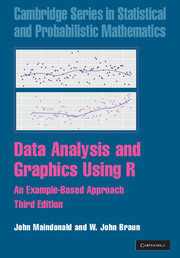
Data Analysis and Graphics Using R
- An Example-Based Approach
-
- Published online:
- 05 October 2013
- Print publication:
- 06 May 2010
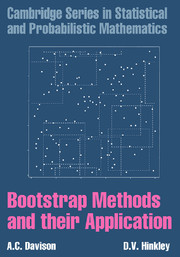
Bootstrap Methods and their Application
-
- Published online:
- 05 June 2013
- Print publication:
- 28 October 1997
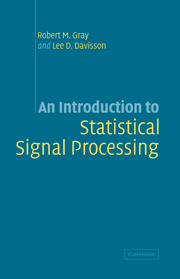
An Introduction to Statistical Signal Processing
-
- Published online:
- 05 June 2012
- Print publication:
- 02 December 2004
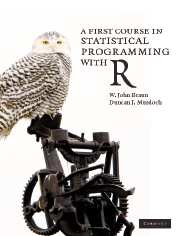
A First Course in Statistical Programming with R
-
- Published online:
- 05 June 2012
- Print publication:
- 13 December 2007
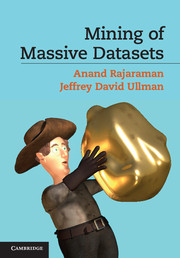
Mining of Massive Datasets
-
- Published online:
- 05 June 2012
- Print publication:
- 27 October 2011
-
- Book
- Export citation
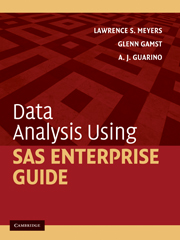
Data Analysis Using SAS Enterprise Guide
-
- Published online:
- 05 June 2012
- Print publication:
- 17 August 2009
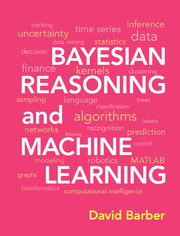
Bayesian Reasoning and Machine Learning
-
- Published online:
- 05 June 2012
- Print publication:
- 02 February 2012
-
- Textbook
- Export citation
Frontmatter
-
- Book:
- Bayesian Reasoning and Machine Learning
- Published online:
- 05 June 2012
- Print publication:
- 02 February 2012, pp i-iv
-
- Chapter
- Export citation
12 - Bayesian model selection
- from II - Learning in probabilistic models
-
- Book:
- Bayesian Reasoning and Machine Learning
- Published online:
- 05 June 2012
- Print publication:
- 02 February 2012, pp 284-302
-
- Chapter
- Export citation
